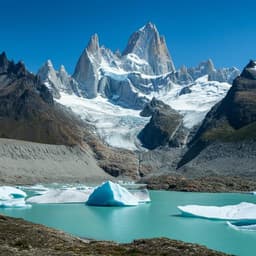
Earth Sciences
Rapid retreat of Thwaites Glacier in the pre-satellite era
A. G. C. Graham, A. Wåhlin, et al.
Explore the groundbreaking research conducted by Alastair G. C. Graham and colleagues, which uncovers the rapid retreat of Thwaites Glacier and its implications for rising sea levels. This study reveals a surprising retreat rate that could reshape our understanding of Antarctic dynamics.
~3 min • Beginner • English
Related Publications
Explore these studies to deepen your understanding of the subject.







